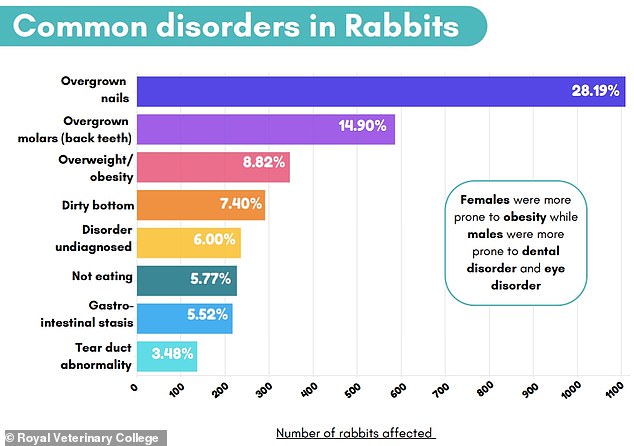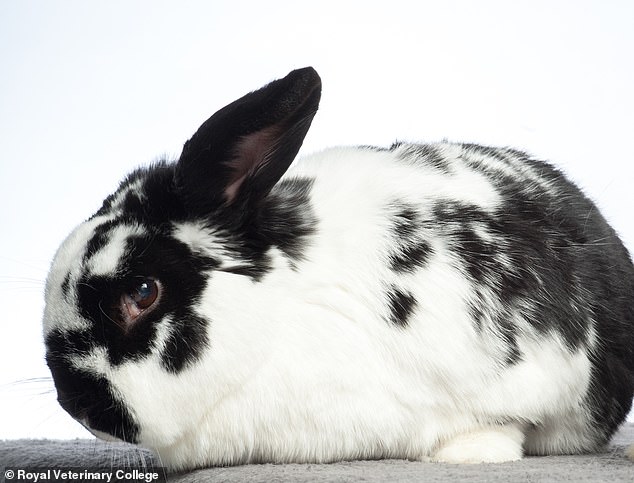Attention rabbit owners: Vets reveal the most common health problems in rabbits — and it’s bad news if your pet has lop-eared ears
- British vets examined the health of 162,000 rabbits under veterinary care
- The most common conditions were overgrown nails and teeth, and obesity
According to experts, families looking to buy a rabbit should opt for rabbits with lop ears and short heads due to health concerns.
In the largest study of its kind in the world, British researchers examined the body shape of 162,000 rabbits under veterinary care in 2019.
Their analysis found that unnatural body shapes, poor diet and insufficient exercise are strongly linked to poor health in the furry animals.
Nearly 80 percent of the rabbits were classified as short-headed, 16.8 percent as medium-headed, and only 3.5 percent as long-headed.
Rabbits with long heads are the most similar in body shape to wild rabbits, which shows how much the rabbits we keep as pets today have changed from their original natural build, the researchers say.
Families considering buying a rabbit should avoid rabbits with lop ears and short heads due to health concerns, experts warn (stock image)

Some of the most common conditions in rabbits were overgrown nails, overgrown molars and obesity – all of which can be linked to limited exercise and unnatural diets.
Rabbits with shorter heads were at greater risk for tear duct abnormalities, coat problems and dirty bottoms, they found.
The team also found that 57 percent of the rabbits had lop-eared ears, a feature not commonly seen in nature.
These rabbits, already known to be at higher risk for excessive earwax build-up and ear pain, were found to have shorter lifespans compared to rabbits with traditionally erect ears.
Some of the most common conditions in rabbits are overgrown nails, overgrown teeth and obesity. These conditions can all be linked to limited exercise and an unnatural diet.
The study also found that the average rabbit weighs 5 pounds (2.26 kg) and has a life expectancy of five years.
The research was led by Dr Dan O’Neill, senior lecturer in companion animal epidemiology at the Royal Veterinary College (RVC) in London.
He said: ‘This new study helps us understand that the health of our rabbits is very much dependent on the choices we make as owners.

The study also found that the average rabbit weighed 5 pounds (2.26 kg) and had a lifespan of five years
‘Whether it is the body shape of the rabbits we purchase or the food and exercise we give our pet rabbits, we play an important and influential role in determining whether their health is good or bad.
‘This research also shows that we can improve the lives of our beloved rabbits.
‘If owners are more aware of the importance of choosing a rabbit with a more natural body type in the first place, and later on, regular health and hygiene checks, and providing a good diet and plenty of exercise, especially for rabbits with unnaturally short heads or floppy ears, it can make a huge difference to their overall health and quality of life.’
The RVC advises owners to feed their rabbits mainly a good quality hay or grass, supplemented with commercial feed in small quantities and fruit – and also carrots – as an occasional treat.
Rabbits should also be encouraged to exercise by giving them access to a large, predator-proof space, the researchers said.
It is better to have the food hidden in the environment, instead of putting it in a bowl or in the same place every day. This will encourage the birds to search for food.
The findings were published in the journal Veterinary Record.
